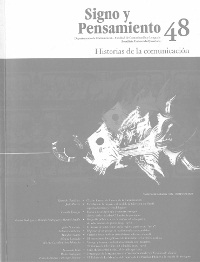Abstract
As a cultural and aesthetic object, fi lms manage to estabIish - like no other artistic expression- deep relations with the contexts and social dynamics where they a re made. This paper aims at exploring, though briefty, the way in which the cinema in Colombia has contributed to the construction of Modernity; it also seeks to provide a closer look at the relations that can be establ ished with the socially-built cultural imagi nary. With these two purposes in mind, the first part of rhe paper is devoted to making a brief defin ition of modernity and showing how this trend has evolved in Colombia, while the second part intends to describe how film-making was incorporated into rhe modernization process during a particular period of time, from 1900 to 1960.This journal is registered under a Creative Commons Attribution 4.0 International Public License. Thus, this work may be reproduced, distributed, and publicly shared in digital format, as long as the names of the authors and Pontificia Universidad Javeriana are acknowledged. Others are allowed to quote, adapt, transform, auto-archive, republish, and create based on this material, for any purpose (even commercial ones), provided the authorship is duly acknowledged, a link to the original work is provided, and it is specified if changes have been made. Pontificia Universidad Javeriana does not hold the rights of published works and the authors are solely responsible for the contents of their works; they keep the moral, intellectual, privacy, and publicity rights.
Approving the intervention of the work (review, copy-editing, translation, layout) and the following outreach, are granted through an use license and not through an assignment of rights. This means the journal and Pontificia Universidad Javeriana cannot be held responsible for any ethical malpractice by the authors. As a consequence of the protection granted by the use license, the journal is not required to publish recantations or modify information already published, unless the errata stems from the editorial management process. Publishing contents in this journal does not generate royalties for contributors.


